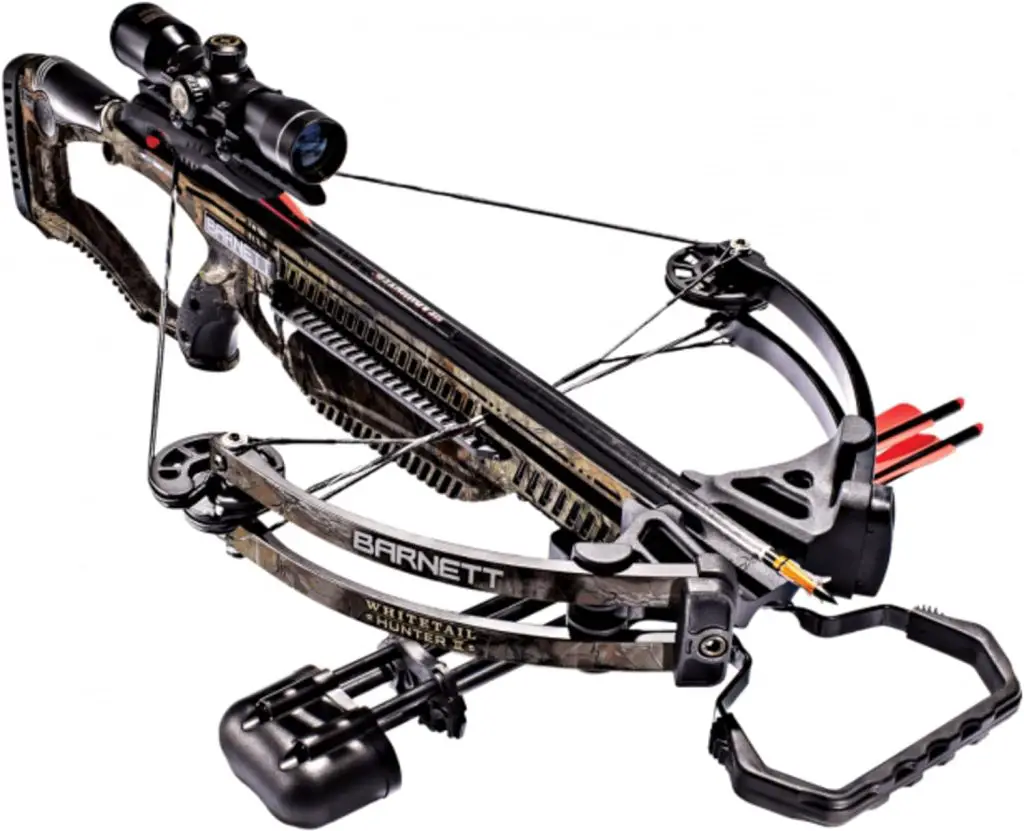For hunters, choosing the right weapon is crucial. The two main options are crossbows and compound bows. Both have advantages and disadvantages for hunting. In this comprehensive guide, I’ll compare key differences between crossbows and compound bows to help you determine which is better suited for your needs.
Overview of Crossbows and Compound Bows
First, let’s review the basics of each weapon:
Crossbow
- Bow is mounted on a rifle-style stock
- Shoots bolts or short arrows using a trigger
- Requires cocking before each shot
- Includes a sight for aiming
- Effective range around 40-100 yards
Compound Bow
- Curved bow with pulleys and stiff limbs
- Shoots standard length arrows
- Drawn and held by hand before release
- May have sights, stabilizers, releases
- Effective range of 40-80 yards
While both are archery weapons, crossbows and compound bows have distinct characteristics. Keeping these key differences in mind, let’s compare them across various factors.
Direct Comparison
| Factor | Crossbow | Compound Bow |
|---|---|---|
| Operation | Rifle-like stock, trigger release | Handheld, drawn and released |
| Power Source | Cocked mechanically | Drawn manually |
| Arrow/Bolt | Shoots bolts | Shoots standard arrows |
| Accuracy | Generally more accurate | Takes practice for consistency |
| Effective Range | 40-100 yards | 40-80 yards |
| Penetration | High energy for deep penetration | Kinetic energy varies by draw weight |
| Draw Weight | 150-200 lbs typical | 50-70 lbs common |
| Safety | Can misfire if cocked incorrectly | Lower risk of misfires |
Looking at these direct comparisons, some key trade-offs emerge between crossbows and compound bows. Next I’ll dive deeper into the details on functionality, performance, and other considerations.
Shooting Operation
The hands-on operation of cocking, drawing, and shooting differs significantly:
Crossbow

- Cocked using a rope cocker or crank before shooting
- Loading a bolt is very easy
- Firing is done by pulling a trigger, like a gun
- The trigger allows for a surprise release
Compound Bow
- Must manually draw and hold at full draw each time
- More strength needed to steadily hold draw weight
- Release done by relaxing fingers or trigger release
- Takes practice to master smooth draw and release
Crossbows are easier to cock and fire, while compounds require strength and technique to shoot accurately.
Power Source
The source for generating arrow propulsion force differs:
Crossbow
- Power comes from the limbs, cams, and strings that are cocked using mechanical advantage
- Typically 150-200 lbs of draw weight when cocked
- Doesn’t rely on user strength as much
Compound Bow
- Power comes directly from the archer’s muscles drawing the bow
- Bows are around 50-70 lbs draw weight on average
- The user’s fitness level impacts power
Crossbows offer more consistent power from cocking, while compound bow power varies based on the archer’s strength.
Aiming and Accuracy
Both weapons have the capability for excellent accuracy in experienced hands. However, the learning curve differs:
Crossbow
- Includes a mounted scope or red dot for aiming
- The stock keeps the bow steady and on target
- Generally easier to achieve accuracy as a beginner
Compound Bow

- Various accessories like sights and stabilizers available
- No stock to stabilize, so form is important
- Takes significant practice to develop consistent accuracy
Crossbows allow newer users to be accurate sooner, while compounds require strength and repeatable form.
Effective Range
The maximal effective range of bolts/arrows differs between the weapons:
Crossbow
- Shoot bolts up to 100 yards accurately in ideal conditions
- Powerful energy maintains velocity over range
- Can take game humanely up to 60 yards
Compound Bow
- Maximum accurate range around 60-80 yards
- Arrows lose velocity more quickly
- Ethical shots on game up to 40-50 yards
Crossbows achieve longer effective hunting ranges due to higher bolt energy retention.
Penetration Ability
Deep penetration ensures clean harvests. Here is how they compare:
Crossbow
- Extremely high energy from cocked limbs and weight forward design
- Bolts penetrate deeply and pass through targets
Compound Bow
- Penetration is proportional to the kinetic energy on release
- Lower draw weights limit penetration ability
- Pass through shots depend on arrow selection
For maximum penetration, crossbows excel due to very high foot-pounds of energy.
Draw Weight Comparison
Heavier draw weights impact power.
Crossbow
- Require 150-200 lbs to cock using a rope cocker
- Too heavy to draw by hand
Compound Bow
- Have peak draw weights from 50-70 lbs generally
- Some enthusiasts use 80+ lb bows
Crossbows far exceed human draw strength capabilities. Compound bows stay within normal limits.
Safety Considerations
Safe handling is crucial for archery equipment. Here are key factors:
Crossbow
- Can fire accidentally if bumped while cocked
- Should always point downrange when cocked
- Making modifications can be dangerous
Compound Bow
- Lower risk of accidental firing
- Drawing a high poundage bow incorrectly can injure shoulder
Both weapons warrant safe handling. But cocked crossbows have higher risk of unintentional discharge if not managed properly.
Noise Levels
The sound of shooting varies between the two:
Crossbow
- Very loud crack on firing, like a gunshot
- The noise can spook game if too close
Compound Bow
- Significantly quieter when shooting
- More suitable for close encounters
Compound bows have a stealth advantage for hunting wary game that react to loud noises.
Recommended Models
Based on this comparison, here are some top crossbow and compound bow options:
Crossbows
- Barnett Whitetail Hunter II – $479
- Killer Instinct Ripper 415 – $599
- TenPoint Wicked Ridge M370 – $289
Compound Bows
- Bear Archery Cruzer – $399
- Diamond Infinite Edge Pro – $349
- Hoyt PowerMax – $799
These models offer high performance at different price points for both weapon types.
Considerations When Choosing
Key selection factors include:
- Accuracy – Crossbows are often easier for beginners
- Power – Crossbows provide flatter trajectories
- Range – Crossbows shoot farther effectively
- Penetration – Crossbow bolts penetrate deeply
- Safety – Compounds are lower risk if used properly
- Noise – Compounds are quieter for close shots
Your strength, skill level, hunting style, and local regulations will determine which option fits you best. Try out both in person before buying if possible.
Recommendation
For hunters with limited upper body strength or wanting downrange accuracy, a quality crossbow often provides the most confidence in the field. With practice, crossbows allow ethical and effective harvests within 60 yards.
For patient hunters who relish mastering technique, traditional compound bows offer a quieter, more rewarding shooting experience at moderate distances.
There is no universally superior choice between crossbows and compound bows. By understanding your needs and abilities, you can choose the best hunting weapon to match your style.

